Pranab Ghosh, Pranab Ghosh9789810247447, 981-02-4744-3
Table of contents :
Contents……Page 12
Preface……Page 8
Acknowledgments……Page 10
1.1 Rotation-Powered Pulsars: Radio Discovery……Page 22
1.2 Accretion-Powered Pulsars: X-Ray Discovery……Page 25
1.3.1 Rotation-Powered Pulsars……Page 31
1.3.2 Accretion-Powered Pulsars……Page 35
1.4.1 Rotation Power……Page 38
1.4.2 Accretion Power……Page 41
1.5.1 Rotation-Powered Pulsars……Page 45
1.5.1.1 Pulsar distances……Page 47
1.5.1.2 Galactic electron distribution……Page 48
1.5.1.3 Galactic pulsar distribution……Page 52
1.5.1.4 Selection effects……Page 53
1.6 Period Distributions of Pulsars……Page 55
2.1 Historical Notes on Neutron Stars……Page 60
2.2.1 Degeneracy……Page 68
2.2.2 Electron Degeneracy……Page 71
2.2.4 Complete Degeneracy……Page 72
2.3 The Landau Arguments……Page 74
2.3.1 Degenerate Stars: Rough Mass Limits……Page 79
2.3.2 Degenerate Stars: Mass-Radius Relations……Page 80
2.4 White Dwarfs……Page 81
2.4.1 The Stoner-Anderson Work……Page 82
2.4.2 Polytropes……Page 86
2.4.3 Chandrasekhar’s Work……Page 89
2.4.4 Modern Work…….Page 96
2.5 Neutron Stars……Page 101
2.5.1 The Oppenheimer-Volkoff Work……Page 102
2.5.2 A General-Relativistic “Toy” Neutron Star……Page 109
2.6 Landau Arguments: General-Relativistic Modifications……Page 112
3.1 Matter at Low Densities: Electronic Energy……Page 118
3.1.1 Wigner-Seitz Cells……Page 119
3.1.2 The Thomas-Fermi Approximation……Page 122
3.2 Dense Matter Below Neutron-Drip Density: Equilibrium Nuclei……Page 125
3.2.1 Effects of Lattice Energy……Page 131
3.2.2 Nuclear Shell Effects……Page 134
3.3 Neutron Drip……Page 137
3.4 Matter Above Neutron-Drip Density: Nuclei Surrounded by Neutrons……Page 139
3.4.1 Nuclear Surface Energy: A Primer……Page 142
3.4.2 BBP Results……Page 146
3.4.3 More Accurate Results……Page 147
3.4.4 Simple Scalings……Page 149
4.1 Above Nuclear-Matter Density: Uniform Nuclear Matter……Page 152
4.1.1 The Goldstone Expansion……Page 155
4.1.2 Goldstone Diagrams……Page 158
4.1.2.1 First-order diagrams……Page 159
4.1.2.2 Second-order diagrams……Page 160
4.1.3 Brueckner’s Reaction Matrix……Page 162
4.1.4 Correlations and “Healing”……Page 166
4.1.5 Brueckner-Bethe-Goldstone (BBG) Theory……Page 171
4.1.6 The Variational Method……Page 175
4.1.6.1 Cluster diagrams……Page 179
4.1.6.2 Modern calculations……Page 182
4.1.7 Recent Developments in BBG and Variational Approaches……Page 185
4.1.7.1 Relativistic effects in Brueckner theory……Page 189
4.1.7.2 Relativistic effects in variational methods……Page 191
4.1.7.3 Recent results……Page 192
5.1 Masses and Radii……Page 194
5.1.1 Insensitivity of Radius to Mass……Page 200
5.2 Internal Structure……Page 201
5.2.1 Crustal Properties: Mass and Radius……Page 204
5.3 Non-Spherical Shapes: Rods and Plates……Page 207
5.3.1 Turning Nuclei “Inside Out”……Page 209
5.3.2 Physical Insights: Frustrated Fission……Page 210
5.3.3 Uncertainties……Page 211
5.4.1 The Maximum Compactness……Page 213
5.4.2 The Maximum Mass……Page 216
5.5 Rotating Neutron Stars……Page 219
5.5.1 The Hartle-Thorne Approximation……Page 221
5.5.2 Arbitrary Rotation……Page 223
5.5.3.1 The mass-shed limit……Page 226
5.5.3.2 The gravitation-wave limit……Page 228
5.5.3.3 The r-mode……Page 230
5.5.3.4 The supramassive-collapse limit……Page 231
5.5.3.5 Maximum angular velocity of neutron stars……Page 233
5.5.4 Hartle-Thorne Approximation: Reprise……Page 235
5.5.5 Moments of Inertia……Page 236
5.5.5.1 Crustal moment of inertia……Page 239
6.1 Binary Stellar Evolution……Page 242
6.1.1 Cases A, B, and C……Page 243
6.1.2.1 Conservative mass transfer……Page 246
6.1.2.2 Non-conservative mass transfer……Page 247
6.1.3 Stellar Evolution……Page 249
6.1.3.1 Conservative evolution……Page 250
6.1.3.2 Common-envelope (CE) evolution……Page 252
6.2 Supernovae: Birth of Neutron Stars……Page 255
6.2.1 Final Evolution of Helium Stars and Cores……Page 256
6.2.2 Core Collapse: Neutron Star Formation……Page 259
6.2.3 Core Bounce: Supernova Explosion……Page 260
6.2.3.1 Explosion mechanisms……Page 262
6.2.3.2 Orbital changes due to supernova explosions……Page 265
6.2.4 Evolution of Proto-Neutron Stars……Page 267
6.3 Rotation Power in Young Pulsars……Page 271
6.3.2 Probes of Be-Star Outflow: PSR B1259-63……Page 273
6.3.2.1 The Shvartsman surface……Page 274
6.3.2.2 Propeller spindown……Page 276
6.3.2.3 Tilted Be-star disks……Page 277
6.3.2.4 Recent work: further orbital dynamics……Page 279
6.4 Accretion Power in Middle-Aged Pulsars……Page 280
6.4.1 Evolution to Massive X-Ray Binaries……Page 281
6.4.2 Evolution to Intermediate-Mass X-Ray Binaries……Page 284
6.4.3.1 CVs……Page 285
6.4.3.2 LMXBs……Page 287
6.5 Rotation Power in Old, Recycled Pulsars……Page 293
6.5.1 Final Evolution of HMXBs and Recycling……Page 295
6.5.1.1 Recycled pulsars: single or with degenerate companions……Page 297
6.5.2 The Double Pulsar Binary J0737-3039……Page 301
6.5.3 Final Evolution of LMXBs and Recycling……Page 303
6.5.3.2 Magnetic braking……Page 308
6.5.3.3 The minimum period and the period gap……Page 310
6.5.3.4 Donor evolution and expansion……Page 312
6.5.3.5 Recycled pulsars from LMXBs……Page 315
6.5.4 Missing Links: Accreting Millisecond Pulsars……Page 317
6.5.5 Irradiation of Low-Mass Companions……Page 322
6.5.6 Missing Links: “Black Widow” Pulsars……Page 323
6.5.7 Pulsars with Planets……Page 325
7.1 Pulse Properties……Page 328
7.1.1.2 Interpulses……Page 329
7.1.1.3 Polarization……Page 331
7.1.1.5 Frequency dependence and stability……Page 334
7.1.2.1 Intensity variations and nulling……Page 336
7.1.2.2 Subpulse drifting……Page 339
7.1.2.3 Micropulses……Page 340
7.1.2.4 Giant pulses……Page 342
7.2.1 Pulsar Timing……Page 344
7.2.2 Secular Period Changes……Page 349
7.2.2.1 Characteristic age……Page 350
7.2.2.2 Braking index……Page 352
7.2.2.3 Higher derivatives……Page 353
7.2.3.1 Timing noise……Page 354
7.2.3.2 Millisecond pulsars as stable clocks……Page 357
7.2.3.3 Limits on cosmic gravitational wave background……Page 363
7.2.3.4 Glitches……Page 365
7.2.3.5 Glitches: starquakes……Page 370
7.2.4 Timing Rotation Powered Pulsars in Binaries……Page 375
7.2.4.1 PSR 1913+16: historical notes……Page 380
7.2.4.2 Binary rotation-powered pulsars: general systematics……Page 382
7.2.4.3 PSR 1913+16: nursery of relativistic gravity……Page 386
7.2.4.4 PSR 1534+12 and similar “relativity laboratories”……Page 392
7.2.4.5 The double-pulsar binary as relativity laboratory……Page 394
7.2.4.6 A related “fundamental” effect……Page 396
8.1 Superfluidity in Neutron Stars……Page 398
8.1.1 Pairing……Page 399
8.1.2 Gap Energy……Page 401
8.1.3 Rotating Superfluids and Quantized Vortices……Page 403
8.2 Post-Glitch Relaxation: Two-Component Theory……Page 407
8.3 Glitches: Vortex Pinning……Page 408
8.3.1 The Pinning Force……Page 410
8.3.2 Strong and Weak Pinning……Page 412
8.3.3 The Magnus Force……Page 415
8.4 Post-Glitch Relaxation: Vortex Creep……Page 416
8.4.1 Rotational Dynamics: Steady State……Page 419
8.4.2 Approach to Steady State……Page 421
8.5 Stellar Parameters from Glitch Data……Page 426
8.6 Glitches: Recent Developments……Page 430
9. Properties of Accretion Powered Pulsars……Page 434
9.1 Binary Characteristics……Page 435
9.1.1 Displaying Binary Systematics……Page 438
9.1.2 Newtonian Apsidal Motion……Page 440
9.1.3 Orbital Period Changes……Page 444
9.1.4 Neutron-Star and Companion Masses……Page 447
9.2 Pulse Profiles……Page 450
9.3 Secular Period Changes……Page 453
9.4 Timing Noise……Page 461
9.4.1 Power-Density Spectra……Page 464
9.4.1.1 Observed power spectra……Page 466
9.4.2 Time-Domain Analysis……Page 470
9.5.1.1 Low-frequency QPOs……Page 472
9.5.1.2 High-frequency QPOs……Page 476
9.5.1.3 LF QPO diagnostics……Page 477
9.5.1.4 HF QPO diagnostics……Page 479
9.5.2 QPOs in HMXBs……Page 485
9.6 X-Ray Spectra……Page 486
9.6.1 Continuum Emission……Page 487
9.6.2 Pulse-Phase Spectroscopy……Page 490
9.6.3 Cyclotron Features……Page 492
9.6.4.1 Fluorescence……Page 495
9.6.4.2 X-ray ionization of stellar winds……Page 498
9.6.4.3 Observations……Page 502
9.6.4.4 Recombination……Page 503
9.6.4.5 Recent observations……Page 506
9.6.4.6 Wind diagnostics……Page 510
9.7 Mutants: Anomalous X-Ray Pulsars (AXPs)……Page 511
10.1 Magnetospheres of Accretion-Powered Pulsars……Page 516
10.1.1 Exterior Flow and Plasma Capture……Page 517
10.1.1.1 Capture from stellar winds……Page 518
10.1.1.2 Fluctuations in stellar winds……Page 525
10.1.1.3 Capture from Roche-lobe overflow……Page 526
10.1.2 Formation of Magnetospheres……Page 529
10.1.2.1 Lengthscales of magnetospheres……Page 532
10.1.3 Radial Flow…….Page 534
10.1.3.1 Size of the magnetosphere……Page 536
10.1.3.2 The shock……Page 538
10.1.3.3 Shape of the magnetosphere……Page 539
10.1.3.4 Magnetospheric boundary with accretion flow……Page 545
10.1.5 Thin Keplerian Accretion Disks……Page 546
10.1.5.1 One temperature disks……Page 548
10.1.5.2 The α-model of disk viscosity……Page 550
10.1.5.3 The nature of disk viscosity……Page 552
10.1.5.4 The structure of α-disks……Page 555
10.1.5.5 Two temperature disks……Page 559
10.1.6 The Disk-Magnetosphere Interaction……Page 563
10.1.6.1 Basic electrodynamic processes……Page 564
10.1.6.2 Steady flow models……Page 569
10.1.7 Disk-Magnetosphere Boundary Layer……Page 573
10.1.7.1 Boundary-layer behavior……Page 577
10.1.7.2 Boundary-layer: nature and structure……Page 579
10.1.8 Inner Edge of the Disk……Page 581
10.1.9 Outer Transition Zone……Page 585
10.1.10 Further Work……Page 587
10.1.11 Plasma Entry into Magnetospheres: Radial Flow……Page 590
10.1.11.1 Entry via Rayleigh-Taylor instability……Page 591
10.1.11.2 Cusp entry……Page 597
10.1.11.3 Entry by other modes……Page 599
10.1.12 Plasma Entry into Magnetospheres: Disk Flow……Page 601
10.1.13 Accretion Flows Inside Magnetospheres……Page 602
10.1.13.1 Field-aligned flow……Page 603
10.1.13.2 Flow “between” field lines……Page 609
10.1.14.1 Radiative stopping……Page 613
10.1.14.2 Collisional stopping……Page 617
10.2 Magnetospheres of Rotation-Powered Pulsars……Page 618
10.2.1 The Goldreich-Julian Argument……Page 619
10.2.2 The Aligned Rotator……Page 623
10.2.2.1 The pulsar equation……Page 626
10.2.2.2 Convergence……Page 627
10.2.2.3 Results……Page 628
10.2.3 Problems with the Standard Model……Page 631
10.2.4 Vacuum Gaps……Page 633
10.2.4.1 Ruderman-Sutherland gaps……Page 637
10.2.5 The Oblique Rotator……Page 644
10.2.6 The Double-Pulsar Binary as Magnetospheric Probe……Page 646
11.1 Emission by Rotation-Powered Pulsars……Page 650
11.1.1 Coherent Emission……Page 651
11.1.2 Emission by Bunches……Page 653
11.1.3 Maser Emission……Page 654
11.1.4 Relativistic Plasma Emission……Page 656
11.2 Emission by Accretion-Powered Pulsars……Page 658
11.2.1 Radiation Transport in Strongly Magnetized Plasmas……Page 659
11.2.1.1 Basic radiative processes……Page 661
11.2.1.2 Transport calculations……Page 664
11.2.2 Pulse Shapes and Spectra……Page 666
12.1.1 Electromagnetic Spindown……Page 670
12.1.2 Propeller Spindown……Page 671
12.1.3 Other Spindown Torques……Page 673
12.1.4 Spindown of PSR B1259-63……Page 674
12.2.1 Torques on Disk-Fed Pulsars……Page 677
12.2.2 Comparison with Observations……Page 682
12.2.3 Torques on Wind-Fed Pulsars……Page 686
12.3 Pulsar Period — Magnetic Field Diagram……Page 687
12.3.1 The Spinup Line……Page 690
12.3.2 Disk Diagnostics: Spinup Lines……Page 693
13.1 Exotic Atoms in Strong Magnetic Fields……Page 696
13.1.1 Further Exotica: Molecular Chains……Page 700
13.2.2 Thermo-Magnetic Effects……Page 702
13.2.3 Dynamos in Young Neutron Stars: Magnetars……Page 703
13.3 Evolution of Neutron-Star Magnetic Fields……Page 706
13.3.1 Accretion-Induced Field Decay……Page 707
13.3.1.1 Ohmic decay……Page 708
13.3.2 Field Decay or Hiding/Burial?……Page 711
14. Strange Stars……Page 714
14.2 Structure of Strange Stars……Page 715
14.3 Search for Strange Stars……Page 717
A.1 Units……Page 720
A.2.1 Equatorial Co-Ordinates……Page 721
A.2.2 Precession of Equinoxes……Page 723
A.2.3 Galactic Co-Ordinates……Page 724
A.2.5 Time Keeping……Page 726
A.2.6.1 Color Index……Page 727
B.1.1 Orbital Elements……Page 730
B.1.2 Mass Function……Page 731
B.1.3 Position in Orbit……Page 732
B.2 Roche Lobes……Page 733
C.1 The Hertzsprung-Russell Diagram……Page 738
C.2 Stellar Evolution……Page 740
C.2.1 Hydrogen Burning……Page 741
C.2.4 Essential Timescales……Page 743
C.2.5 Mass-Radius Relations……Page 744
C.2.6 Brown Dwarfs……Page 745
Appendix D The Two-Nucleon Potential……Page 746
D.1 Skyrme Interaction……Page 749
E.1 Accretion Powered Pulsars and AXPs……Page 752
Bibliography……Page 756
Index……Page 782
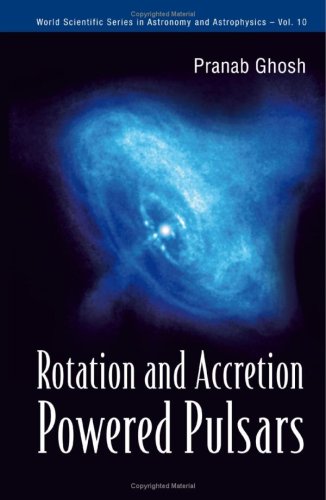
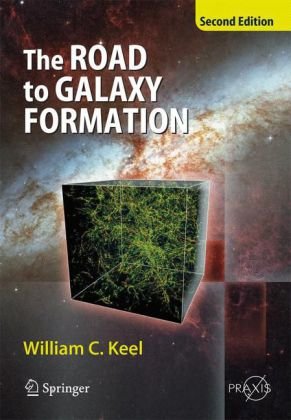
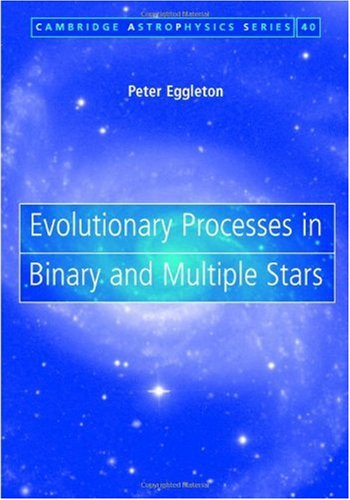
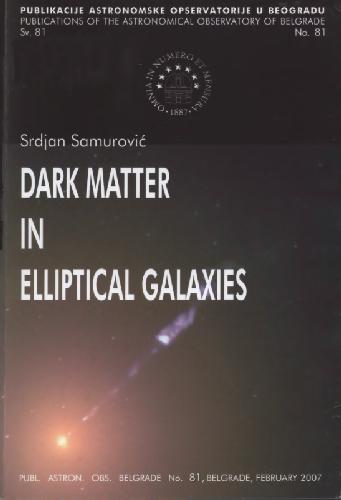
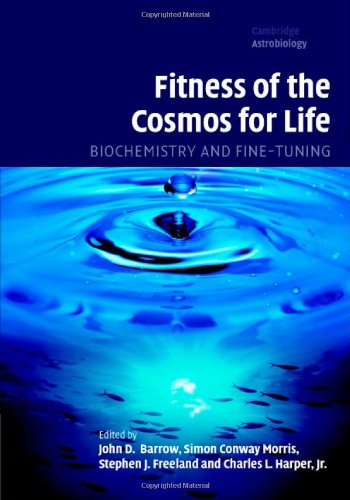
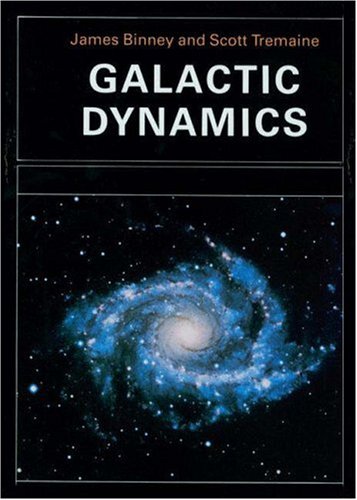
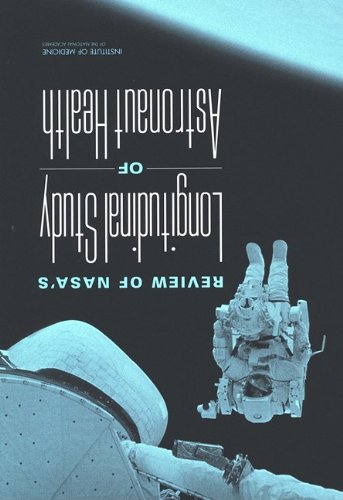
Reviews
There are no reviews yet.